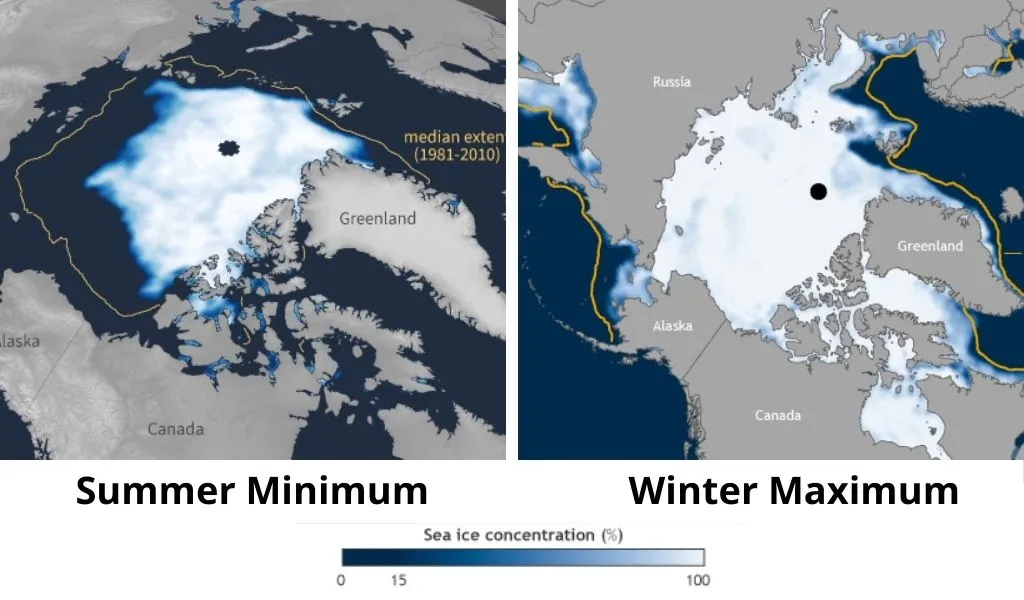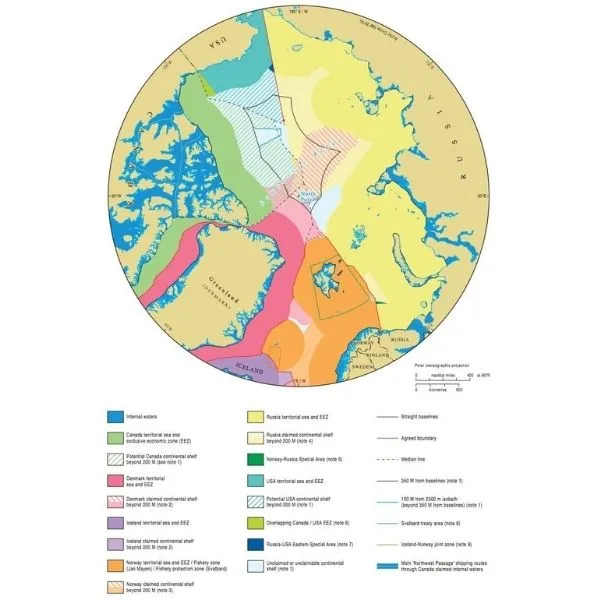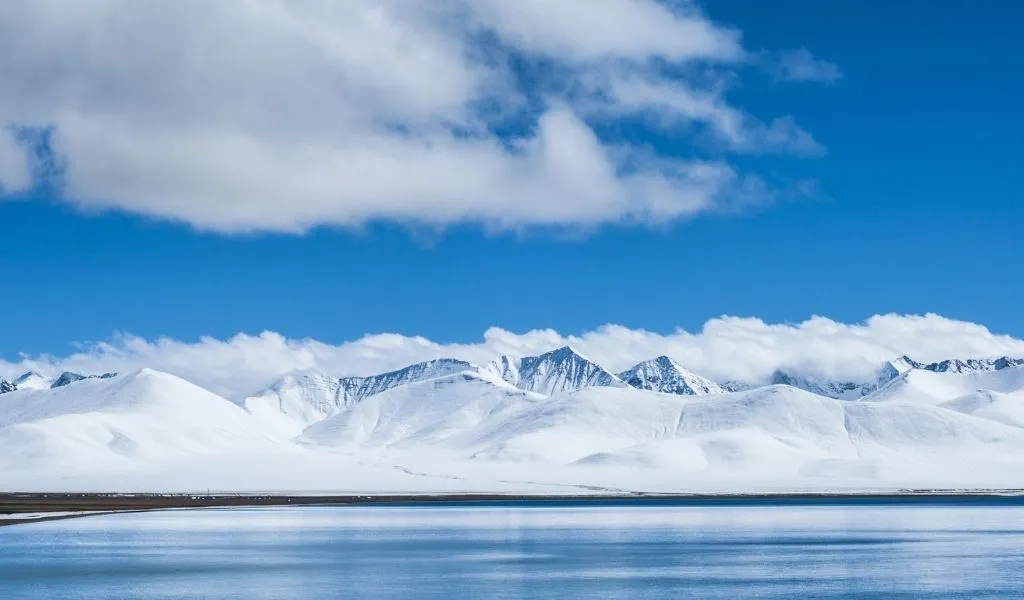The Arctic sits at the northernmost part of the world from the north pole and extending south. It’s at the opposite end of the world to Antarctica which is one of the 7 continents. So, why isn’t the Arctic included in this? Is the Arctic a continent?
No, the Arctic isn’t a continent because a continent is defined as a landmass surrounded by ocean. However, the Arctic is mostly ocean with sea ice so it’s simply a region. Parts of other continents do fall within the boundaries of the Arctic, including North America, Europe, and Asia.
Keep reading to find out more about why the Arctic isn’t classed as a continent, which countries are part of the Arctic, and why it is so different from Antarctica.
Why Isn’t the Arctic a Continent?
The basic definition of a continent is generally considered to be “large, continuous, discrete masses of land, ideally separated by expanses of water”1 (source: The Myth of Continents, M. W. Lewis and K Wigen, 1997).
The Arctic does not meet the basic definition of a continent because there is no large mass of continuous land.
Most of the Arctic is made up of the Arctic Ocean which is covered in sea ice during winter, giving those beautiful snowy landscapes that we are familiar with. However, during summer, much of this melts revealing the ocean underneath.
Not all of the ice melts though, for example, the Arctic Basic and the area around the north pole remain covered in ice and snow year-round. However, if you were to drill through all of the ice at the north pole, you’d eventually find the ocean. This is in contrast to the south pole where you’d find land.
This image from NOAA shows the difference between the Arctic sea ice at its maximum (winter) and minimum (summer).

What Countries Are in the Arctic?
Eight countries have territories within the Arctic region, these are Canada, Denmark (Greenland), Iceland, Norway, Sweden, Finland, Russia, and the United States (Alaska)2 (source: Arctic Council).
Each country can claim the land that falls within its boundary plus 12 nautical miles from its coast3 (source: UN). Anything beyond this is considered to be international waters, including the north pole itself.
Russia is the largest Arctic country in terms of coastline and population. It’s Arctic coastline is 24,140km and makes up 53% of the total Arctic coastline.
Here is a breakdown of the countries in the Arctic, from most territory in the Arctic to least:
| Country | Area in the Arctic (km2) | % of Arctic Land Mass | Source |
|---|---|---|---|
| Russia | 5,500,000 | 39% | Far North, Russia |
| Canada | 3,921,000 | 28% | Northern Territories, Canada |
| Denmark | 2,168,000 | 16% | Greenland and Faroe Islands |
| United States | 1,718,000 | 12% | Alaska, United States |
| Sweden | 261292 | 2% | Norrland, Sweden |
| Norway | 185000 | 1% | Northern Norway |
| Iceland | 103000 | 1% | Iceland |
| Finland | 96,984 | 1% | Lapland, Finland |
| TOTAL ARCTIC LANDMASS | 13,953,276 |
However, the Arctic still has its fair share of territorial disputes. This map by researchers at Durham University shows the various claims (and potential claims) that have been made to the international waters of the Arctic, these tend to be fuelled by oil, gas, and mineral reserves.

Who Lives in the Arctic?
Around 4 million people live in the Arctic, this includes indigenous people, city dwellers, and hunters. Around 2 million of these are Russian which makes up around half of the Arctic population.
Here is a breakdown of the Arctic population by country with future trend projections.

Related Questions
Is the Arctic a Country?
No, the Arctic is not a country, it’s a region that can be defined in several ways, the most common of which is anything north of the Arctic circle, an imaginary line that runs around the world at 66°30′ north.
No single country owns the Arctic as most of it lies on international waters. However, there are eight countries with territory that protrudes into the Arctic region. These are Canada, Denmark, Iceland, Norway, Sweden, Finland, Russia, and the US.
Is Greenland in the Arctic?
Yes, ⅔ of Greenland lies within the Arctic Circle. It is the world’s largest non-continental island that forms part of the North American continent4 (source: Britannica), although is still owned by Denmark.
The Greenland Ice Sheet is about 1,700,000 km2 (656,000 square miles) and covers most of the island. It is the second-largest ice sheet in the world, after Antarctica, and is approximately three times the size of Texas5 (source: National Snow and Ice Data Center).
Is Iceland in the Arctic?
Yes, Iceland is generally considered to be an Arctic country as it is part of the Arctic Council that governs the region.
However, whether it is actually in the Arctic will depend upon which definition of the Arctic you use. For example, Iceland does not sit within the Arctic Circle, it’s a few miles south, except for the Icelandic island of Grímsey.
However, if you use the climate definitions of the Arctic such as the treeline or the 10° summer isotherm, then Iceland is in the Arctic.
Is Alaska in the Arctic?
Yes, the northernmost parts of Alaska, referred to as Far North Alaska, are part of the Arctic. Alaska was once owned by Russia but purchased by the United States in 18676 (source: Wikipedia).
About ⅓ of the state lies within the Arctic Circle, although most of the state has a tundra climate with Arctic-like conditions.
Is Russia in the Arctic?
Yes, around ⅕ of Russia’s land lies within the Arctic Circle, making it the largest Arctic country by area and boundary. Most of this land is found in Siberia, a significant area of Russia that sits in Eastern Europe and North Asia (also known as Eurasia).
The Russian parts of the Arctic also account for most of the Arctic human population with approximately 2 million Russians living there.
Is Antarctica a Continent?
Now that we have established that the Arctic is not a continent, what about Antarctica that lies at the opposite end of the world around the south pole, is it a continent?
Yes, unlike the Arctic, Antaractica is a continent. This is because there is a large landmass underneath Antarctica that sits on its own tectonic plate and is geologically distinct. Antarctica is the 5th largest continent, bigger than Europe and Australia.



![Read more about the article Arctic Tundra vs Alpine Tundra [7 Similarities and Differences]](https://polarguidebook.com/wp-content/uploads/2021/08/Arctic-tundra-vs-alpine-tundra-300x176.jpg)

![Read more about the article Where is the Arctic? [4 Ways to Define it]](https://polarguidebook.com/wp-content/uploads/2021/07/where-is-the-arctic-300x176.jpg)